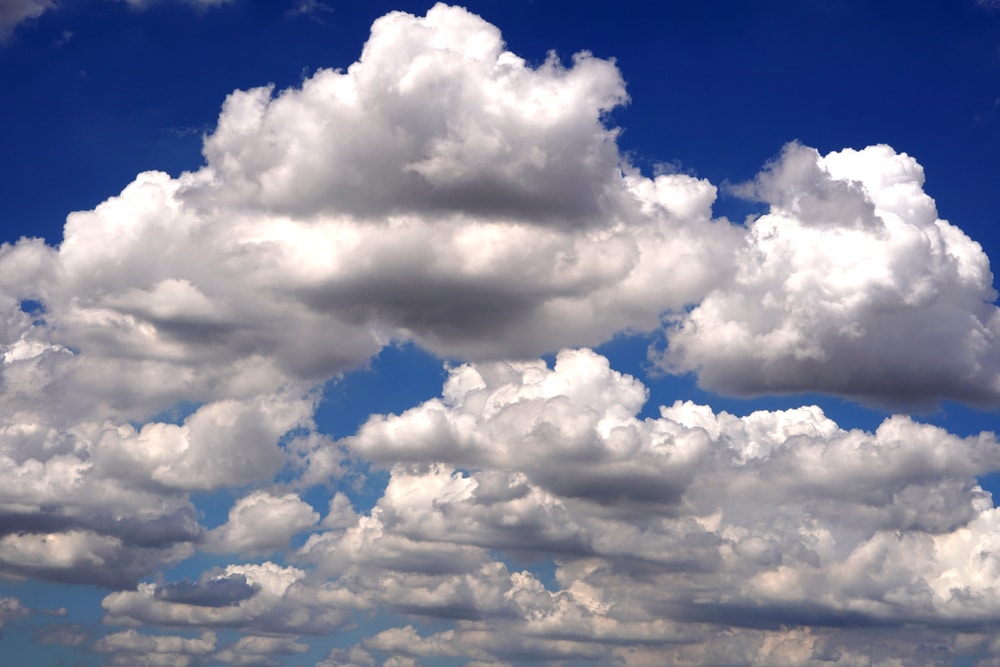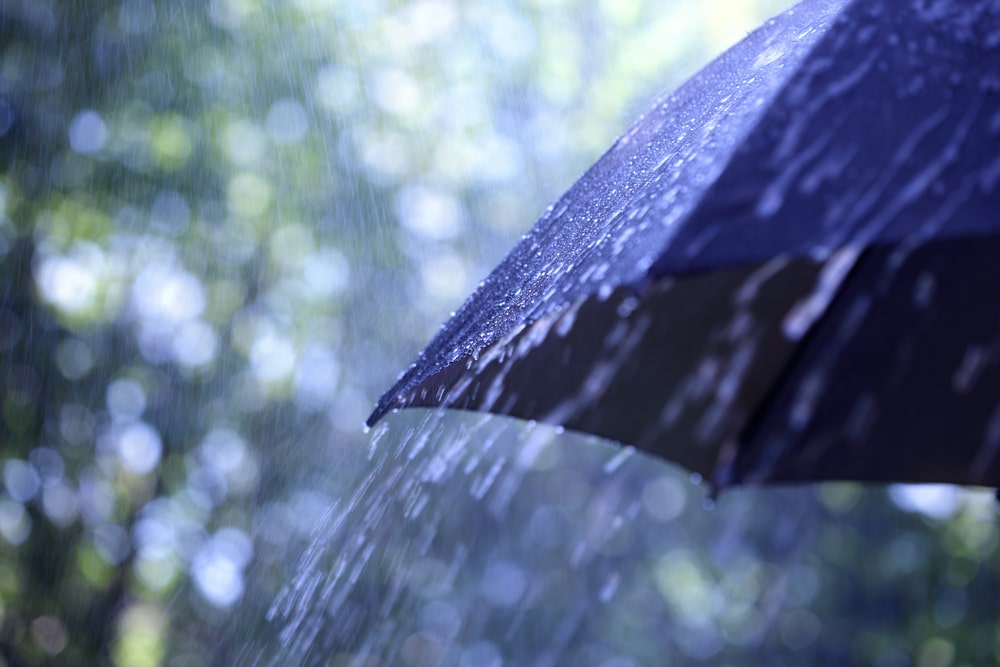Contents
- Korean Seasons
- Korean Words to Describe the Weather
- Other Weather Phenomena in Korean
- 14. 구름 (goo-reum) — cloud
- 15. 비 (bi) — rain
- 16. 홍수 (hong-soo) — flood
- 17. 눈 (noon) — snow
- 18. 얼음 (uh-reum) — ice
- 19. 우박 (woobak) — hail
- 20. 안개 (an-gae) — fog
- 21. 기온 (gi-on) — temperature
- 22. 바람 (ba-ram) — wind
- 23. 태풍 (tae-poong) — typhoon
- 24. 폭풍 (pok-poong) — storm
- 25. 번개 (bun-gae) — lightning
- 26. 천둥 (chun-doong) — thunder
- 27. 무지개 (moo-ji-gae) — rainbow
- 28. 지진 (ji-jin) — earthquake
- Common Korean Phrases About the Weather
- 29. 날씨가 어때요? (Nal-ssi-ga eo-ttae-yo?) — How’s the weather?
- 30. 오늘 날씨가 어때요? (O-neul nal-ssi-ga eo-ttae-yo?) — How’s the weather today?
- 31. 날씨가 나빠요. (Nal-ssi-ga na-ppa-yo.) — The weather is bad.
- 32. 좋아요. (Jo-a-yo.) — It’s good.
- 33. 비가 와요. (Bi-ga wa-yo.) — It’s raining.
- 34. 눈이 와요. (Noon-i wa-yo.) — It’s snowing.
- 35. 하늘이 매우 맑아요. (Ha-neul-i mae-u mal-ga-yo.) — The sky is clear.
- 36. 저는 추운 날씨를 좋아해요. (Jeo-neun chu-un nal-ssi-leul joh-a-hae-yo.) — I like cold weather.
- 37. 비 온대요. (Bi on-dae-yo.) — It’s going to rain.
- Weather-related Korean Idioms
- 38. 바람을 맞다 (ba-ram-eul mat-da) — Run into the wind
- 39. 가랑비에 옷 젖는 줄 모른다. (Ga-rang-bi-e ot jeot-neun-jul mo-reun-da.) — You don’t realize your clothes are getting wet in a drizzle.
- 40. 꽃샘추위. (Kkot-saem-chu-wi.) — The cold envies the flowers.
- 41. 바람을 넣다 (ba-ram-eul nuh-ta) — To put in wind
- 42. 하늘을 지붕 삼다 (ha-neul-eul ji-bung sam-da) — Make the sky a roof
- And One More Thing...
Korean Vocabulary Related to the Weather and Seasons
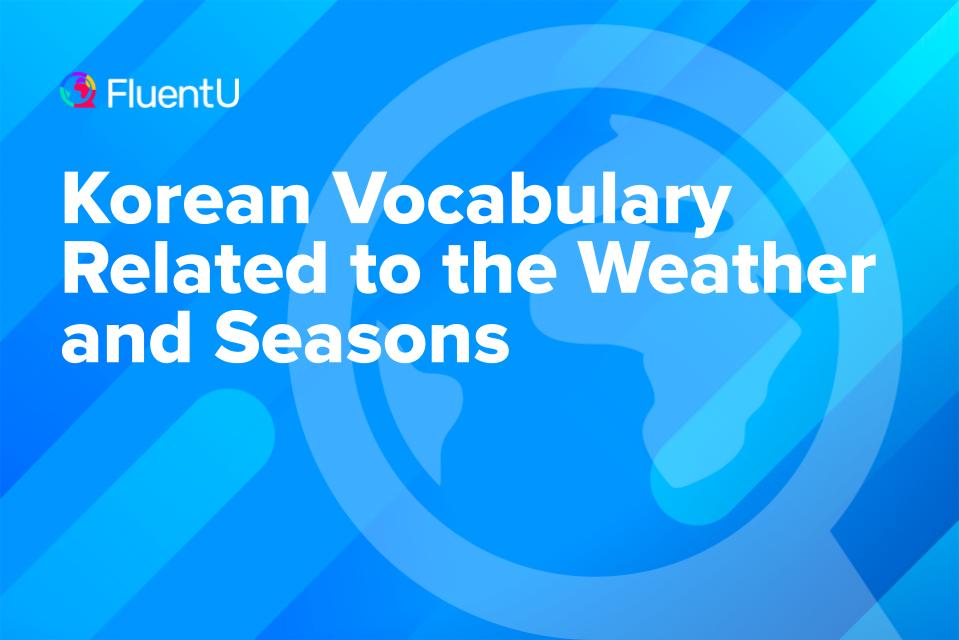
Whether in English or Korean, weather always comes up as a topic for small talk. In today’s lesson, we’ll talk about Korean weather-related vocabulary that might come in handy in conversations with native speakers.
Get ready to embrace awkward small talk in another language.
Download: This blog post is available as a convenient and portable PDF that you can take anywhere. Click here to get a copy. (Download)
Korean Seasons
Let’s start by introducing you to the seasons, or 계절 (gye-jeol). There are four distinct seasons in Korea: spring, summer, fall and winter.
Although, as of late, both summer and winter are becoming more pronounced, extended and unpredictable. Climate change, anyone?
1. 봄 (bom) — spring
If you find yourself in Korea sometime between March and May, then you’re smack in the middle of spring. That’s the best time to chase after cherry blossoms and take that perfect selfie for social media.
The peak time to see cherry blossoms is mid-March to early April, when these pink beauties are at their picture-perfect best.
2. 여름 (yuh-reum) — summer
Summer is from June to August. This is the hottest time of the year.
Ironically, it’s also the wettest. Korea’s 장마 (jang-ma), or rainy season, happens around the middle of June to July.
It’s best to ready your umbrella and raincoats during during rainy season because you could be braving hot and humid weather in the morning, and before you know it, you’re skipping around in puddles in the afternoon.
After this short, wet streak, temperatures then rise to as high as 40℃ around late July to August. There’s way less rain, but it’s still extremely humid. Ditch those thick and baggy clothes and opt for light fabrics.
3. 가을 (ga-eul) — fall
Korea is beautiful all year round, but September to November might just be when it’s most awe-inspiring. That’s when nature plays with the color palette and turns leaves and foliage into crimson, orange and yellow.
A very popular place to visit in the fall is Seoraksan National Park where you can get some stunning autumn views of nature, so get your camera ready. Another popular place is Nami Island.
4. 겨울 (gyuh-wool) — winter
The nation’s winter happens between the months of December and February (snow comes in around late November).
Koreans have romantic notions regarding the first snow of the year. They believe that if you’re lucky enough to be watching the first snow with your “special friend,” true love will blossom for both of you.
For true believers, the first sight of snow sends phones ringing as couples head to the place where they promised to meet. Ah, the promise of forever!
Korean Words to Describe the Weather
Aside from your opinions about the weather, or 날씨 (nal-ssi), you probably also need to know how to describe a particular day’s forecast.
Here are some words that might help you describe how temperatures are at the moment. You can use any of these words on their own in Korean and it would already be considered a complete sentence.
5. 맑아요 (mal-ga-yo) — clear
6. 해나요 (hae-na-yo) — sunny
7. 따듯해요 (tda-deut-hae-yo) — warm
8. 습해요 (seup-hae-yo) — humid
9. 더워요 (duh-wo-yo) — hot
10. 흐려요 (heu-ryuh-yo) — cloudy
11. 바람 불어요 (ba-ram boo-ruh-yo) — windy
12. 비가 와요 (bi-ga wa-yo) — rainy
13. 추워요 (choo-wo-yo) — cold
Other Weather Phenomena in Korean
Beyond the sun and snow, there are several weather-related phenomena that, depending on your personal preference, could either ruin or make your day. Here are some of them.
14. 구름 (goo-reum) — cloud
15. 비 (bi) — rain
16. 홍수 (hong-soo) — flood
17. 눈 (noon) — snow
18. 얼음 (uh-reum) — ice
19. 우박 (woobak) — hail
20. 안개 (an-gae) — fog
21. 기온 (gi-on) — temperature
22. 바람 (ba-ram) — wind
23. 태풍 (tae-poong) — typhoon
24. 폭풍 (pok-poong) — storm
25. 번개 (bun-gae) — lightning
26. 천둥 (chun-doong) — thunder
27. 무지개 (moo-ji-gae) — rainbow
28. 지진 (ji-jin) — earthquake
Common Korean Phrases About the Weather
In addition to the ones we learned earlier, here are some basic sentences and expressions that might come in handy.
29. 날씨가 어때요? (Nal-ssi-ga eo-ttae-yo?) — How’s the weather?
30. 오늘 날씨가 어때요? (O-neul nal-ssi-ga eo-ttae-yo?) — How’s the weather today?
31. 날씨가 나빠요. (Nal-ssi-ga na-ppa-yo.) — The weather is bad.
32. 좋아요. (Jo-a-yo.) — It’s good.
33. 비가 와요. (Bi-ga wa-yo.) — It’s raining.
34. 눈이 와요. (Noon-i wa-yo.) — It’s snowing.
35. 하늘이 매우 맑아요. (Ha-neul-i mae-u mal-ga-yo.) — The sky is clear.
36. 저는 추운 날씨를 좋아해요. (Jeo-neun chu-un nal-ssi-leul joh-a-hae-yo.) — I like cold weather.
37. 비 온대요. (Bi on-dae-yo.) — It’s going to rain.
Sometimes, you might also want to emphasize things.
You need to use a couple of “intensifiers” like 아주 (a-joo) and 많이 (ma-nee) for this. 아주 means “really” and is used to emphasize degree or intensity, and 많이 means “very” or “a lot.”
날씨 아주 좋은데요. (Nal-ssi a-joo jo-eun-de-yo.) — The weather is really nice.
바람 많이 불어요. (Ba-ram ma-nee bul-uh-yo.) — It’s very windy.
Weather-related Korean Idioms
In any language, weather vocabulary figures into idiomatic expressions, making the language more vivid and colorful. Here are some Korean ones.
38. 바람을 맞다 (ba-ram-eul mat-da) — Run into the wind
바람 (ba-ram) — wind
을 (eul) — [particle]
맞다 (mat-da) — run into/get hit with
바람을 맞다 means to be stood up.
Imagine you’re sitting in a Western-themed restaurant, waiting for your date. Suddenly, you see a tumbleweed, like the ones you see in cowboy movies, ominously roll across the floor.
Your table is quiet. You hear the whistle of the lonely wind. You’ve just been stood up. 바람 (wind) here represents the nothingness that is your date. Nada. Zilch.
39. 가랑비에 옷 젖는 줄 모른다. (Ga-rang-bi-e ot jeot-neun-jul mo-reun-da.) — You don’t realize your clothes are getting wet in a drizzle.
가랑비 (ga-rang-bi) — light rain
옷 (ot) — clothes
젖다 (jeot-da) — get wet
모르다 (mo-reu-da) — don’t know
This is a Korean proverb that points to how little things add up to a lot—like in terms of money and wealth.
Saving even a little money can soon mean a lot, but it can also go the other way. Losing money, even a little, will soon send you to the poor house.
The English equivalent for this would be “A little leak will sink a great ship” or “Many drops make a flood.”
40. 꽃샘추위. (Kkot-saem-chu-wi.) — The cold envies the flowers.
꽃 (kkot) — flower
샘 (saem) — envy
추위 (chu-wi) — cold
In Korea, around March, spring comes for its annual show, and flowers start blooming again.
But every once in a while, there’s a spring frost or cold snap that feels like winter returning, seemingly jealous of the flowers in bloom. That’s where this expression comes from.
The explanation for the phenomena is that the chill comes from up North in Siberia, blowing through countries like Japan and Korea.
Interestingly, Japan also has a similar expression with the term 花冷え (hanabie), which literally means “flowers get cold” but conveys the same idea as this Korean idiom.
41. 바람을 넣다 (ba-ram-eul nuh-ta) — To put in wind
바람 (ba-ram) — wind
을 (eul) — [particle]
넣다 (nuh-ta) — put in
This expression is similar to the English one about “putting wind in one’s sails.” It’s motivating and encouraging, or coaxes someone into action.
This goes both ways. For example, you can encourage someone for his benefit, like bucking your friend up for a job interview. On the other hand, you can also inflate his ego so he drunkenly walks up to a girl who you know will turn him down.
42. 하늘을 지붕 삼다 (ha-neul-eul ji-bung sam-da) — Make the sky a roof
하늘 (ha-neul) — sky
을 (eul) — [participle]
지붕 (ji-bung) — roof
삼다 (sam-da) — make
The person who makes the sky his roof is a person who sleeps anywhere and wanders from place to place. The idea encapsulates a vagabond who is perpetually unsettled and always exploring someplace else.
If you want to hear these words and phrases used by native Korean speakers, you can check out FluentU.
FluentU takes authentic videos—like music videos, movie trailers, news and inspiring talks—and turns them into personalized language learning lessons.
You can try FluentU for free for 2 weeks. Check out the website or download the iOS app or Android app.
P.S. Click here to take advantage of our current sale! (Expires at the end of this month.)
Now you know how to describe the weather in Korean. So go ahead and strike up small talk with a native speaker!
Download: This blog post is available as a convenient and portable PDF that you can take anywhere. Click here to get a copy. (Download)
And One More Thing...
If you enjoyed this post, you're already halfway to having the time of your life learning Korean with FluentU!
FluentU makes it possible to learn with K-pop videos, funny commercials, entertaining web series and more. Just a quick look will give you an idea of the variety of FluentU videos on offer:

FluentU really takes the grunt work out of learning languages, leaving you with nothing but engaging, effective and efficient learning. It's already hand-picked the best videos for you (which are organized by level and topic), so all you have to do is simply choose any video that strikes your fancy to get started.
Each word in the interactive captions comes with a definition, audio, image, example sentences and more.

Access a complete interactive transcript of every video under the Dialogue tab, and easily review words and phrases from the video under Vocab.
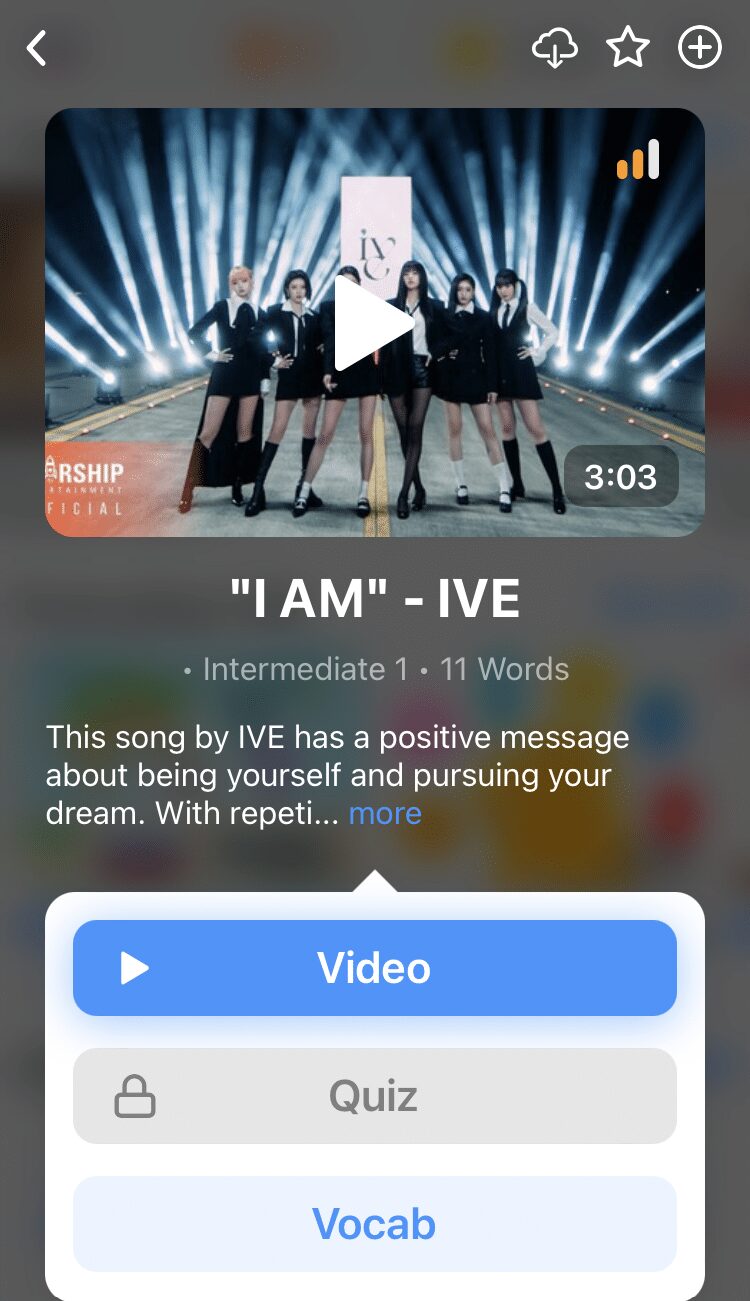
You can use FluentU’s unique Quiz Mode to learn the vocabulary and phrases from the video through fun questions.
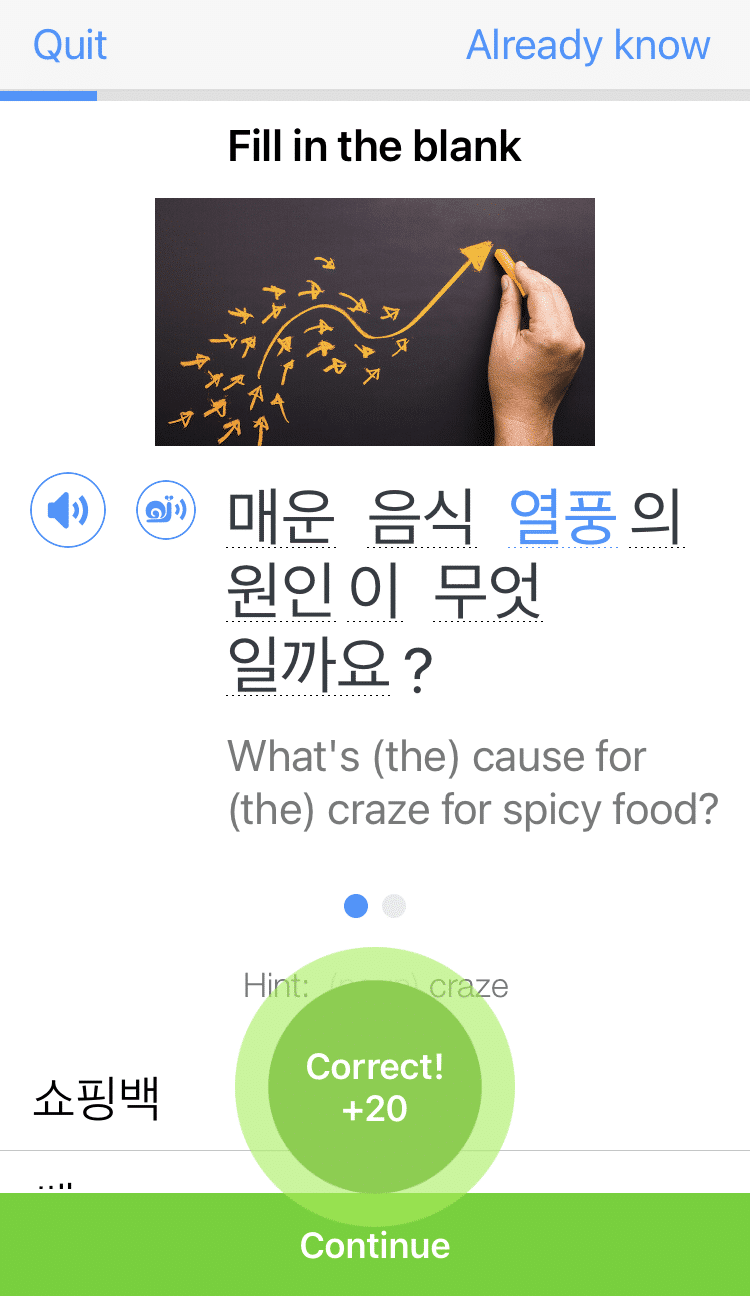
FluentU keeps track of what you're learning, and tells you exactly when it's time for review, giving you a 100% personalized experience.
Review sessions use video context to help embed the words in your memory.
Start using the FluentU website on your computer or tablet or, better yet, download the FluentU app from the iTunes or Google Play store. Click here to take advantage of our current sale! (Expires at the end of this month.)

